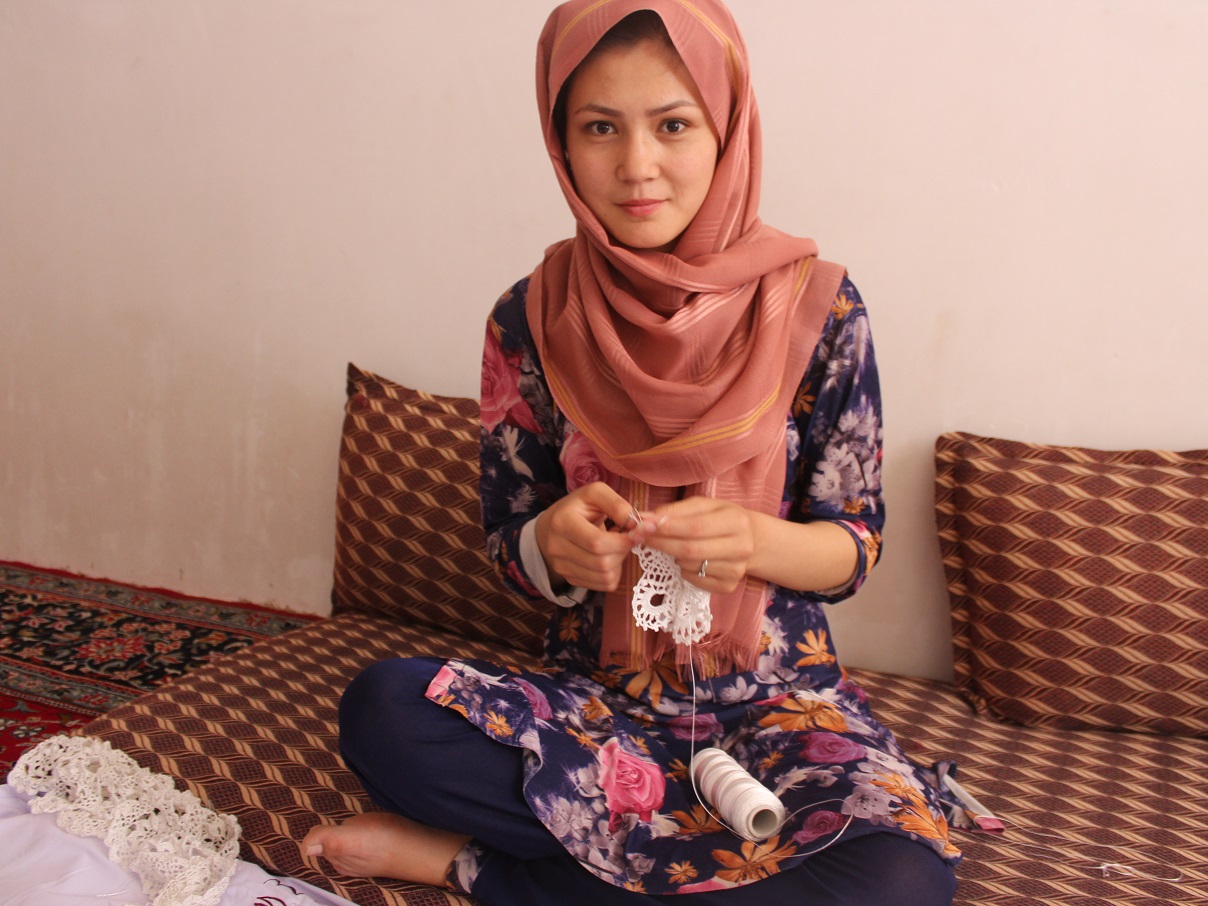For Afghan entrepreneurs, money talks
31 Jan 2020

Aqila, 19 | Self-Help Group member and embroiderer | Balkh Province
Hand in Hand’s programmes are already known to boost incomes, increase savings and “drastically reduce” poverty for Afghans and their families. Now, according to independent research, another impact can be added to the list: increasing their influence and decision-making in the home.
The finding stems from an ongoing joint-project in Afghanistan between Hand in Hand and CARE, designed to test what happens when programmes that target social empowerment are blended with programmes that target economic empowerment.
Six months into the 22-month programme, researchers from Global Impact Management Consulting found that 44 percent of members who receive both business training and social empowerment training already reported having more influence and decision-making power in the home. Perhaps more surprisingly, an almost equal number of members who only receive Hand in Hand’s business training – 38 percent – reported the same. Both numbers are expected to increase as the programme progresses.
“Ultimately, Self-Help Groups are about helping our members launch and manage their own micro-enterprises. But along the way, we see their communication skills and confidence improve as well,” says Hand in Hand International Programme Development Manager Isabel Creixell. “Add to that their own source of income, and power dynamics inside the household start to shift for the better.”
Researchers highlighted other interesting findings including that businesses that involved member’s families tended to outperform those that didn’t.
The report’s findings will have implications on our future programmes, which will seek to recruit young members’ mothers-in-law and other family members into Self-Help Groups, and train all members on taking a “family approach to business”.
The project concludes in November.
Study conducted 6 months into the 22-month project (27% complete)
Members taking only Hand in Hand business training who report increased decision-making in the home: 38%
Members taking business and social training who report increased decision-making in the home: 45%
